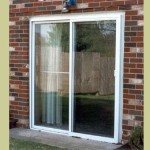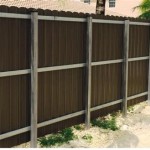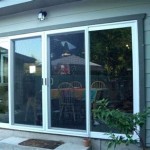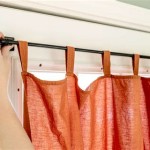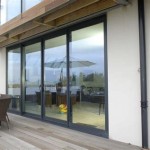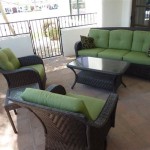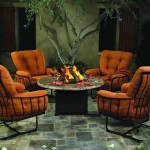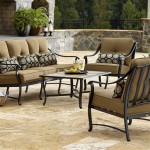What Is The Best Sliding Glass Patio Door?
Selecting the best sliding glass patio door for a home involves considering a multitude of factors that directly impact performance, aesthetics, and overall value. The ideal choice is not universal; rather, it depends heavily on individual priorities, geographic location, budget constraints, and style preferences. A comprehensive evaluation of material options, energy efficiency ratings, security features, and operational mechanisms is essential before making a final decision.
Sliding glass patio doors serve as a crucial link between indoor and outdoor living spaces, contributing significantly to natural light infiltration and ventilation. They can enhance the visual appeal of a home, creating a sense of spaciousness and connection with the surrounding environment. However, poorly chosen or inadequately installed patio doors can lead to energy loss, security vulnerabilities, and operational difficulties, diminishing the comfort and value of the property.
This article aims to provide a detailed overview of the key considerations involved in selecting the optimal sliding glass patio door, exploring different material options, energy efficiency standards, security enhancements, and aesthetic design elements. By understanding these critical factors, homeowners can make informed decisions that align with their specific needs and contribute to a more comfortable, secure, and energy-efficient living environment.
Material Choices: Evaluating Performance and Aesthetics
The material composition of a sliding glass patio door significantly influences its durability, energy efficiency, maintenance requirements, and aesthetic appeal. Common material options include vinyl, wood, aluminum, and fiberglass, each possessing unique characteristics that cater to different priorities.
Vinyl sliding glass patio doors are a popular choice due to their affordability, low maintenance requirements, and excellent energy efficiency. Vinyl is resistant to rot, warping, and insect infestation, making it a durable option for various climates. The material's insulating properties contribute to reducing heat transfer, helping to lower energy bills. However, vinyl may not be as aesthetically versatile as other materials, and its color options can be limited. While vinyl doors are relatively low in cost, higher-end vinyl doors often use more durable formulations, potentially extending lifespan.
Wood sliding glass patio doors offer a classic, elegant aesthetic and provide excellent insulation. Wood frames can be customized with a wide range of stains and paints to match any architectural style. However, wood requires regular maintenance, including painting or staining, to prevent rot and insect damage. Furthermore, wood doors tend to be more expensive than vinyl or aluminum options. The appeal of wood lies in its natural beauty and ability to be crafted into intricate designs, but this comes with the trade-off of increased maintenance and cost.
Aluminum sliding glass patio doors are known for their strength, durability, and resistance to corrosion. Aluminum frames are typically lighter than wood or vinyl, making them easier to operate. While aluminum is generally affordable, it is not as energy efficient as vinyl or wood, as it conducts heat readily. Thermal breaks, which are insulating materials inserted into the aluminum frame, can improve energy efficiency. Aluminum's sleek, modern aesthetic is well-suited for contemporary homes, however, its conductivity means it can feel cold to the touch in colder climates.
Fiberglass sliding glass patio doors offer a combination of strength, durability, and energy efficiency. Fiberglass is resistant to warping, cracking, and rotting, making it a long-lasting option. It also provides excellent insulation, comparable to wood, and can be painted or stained to match any decor. Fiberglass doors are typically more expensive than vinyl or aluminum but offer a superior balance of performance and aesthetics. The stability of fiberglass allows it to withstand extreme temperature fluctuations, making it a suitable choice for regions with harsh weather conditions.
Energy Efficiency: Optimizing Thermal Performance
Energy efficiency is a crucial consideration when selecting a sliding glass patio door. Energy-efficient doors can significantly reduce heating and cooling costs, improve indoor comfort, and minimize environmental impact. Key factors to consider include U-factor, solar heat gain coefficient (SHGC), and air leakage.
The U-factor measures the rate of heat transfer through the door. A lower U-factor indicates better insulation and reduced heat loss or gain. Energy Star-certified doors typically have a U-factor of 0.30 or less for climate zones with cold winters. Selecting doors with low U-factors is particularly important in regions with extreme temperatures to minimize energy consumption and maintain a comfortable indoor environment.
The Solar Heat Gain Coefficient (SHGC) measures the amount of solar radiation that passes through the door. A lower SHGC indicates less solar heat gain, which is beneficial in hot climates to prevent overheating and reduce air conditioning costs. In colder climates, a higher SHGC may be desirable to passively heat the home during the winter months. Choosing the appropriate SHGC depends on the orientation of the door and the local climate conditions.
Air leakage, measured in cubic feet per minute per linear foot of crack length (cfm/ft), indicates how much air infiltrates through the door. Lower air leakage values indicate a tighter seal and reduced drafts. Energy Star-certified doors typically have air leakage values of 0.3 cfm/ft or less. Proper installation and sealing are essential to minimize air leakage and maximize energy efficiency.
In addition to these ratings, consider features such as low-E coatings and argon or krypton gas fills. Low-E coatings reduce the amount of ultraviolet and infrared light that passes through the glass, minimizing heat gain and fading of interior furnishings. Argon or krypton gas fills between the panes of glass further improve insulation by reducing heat transfer. Double-pane or triple-pane glass options are also available, offering increased energy efficiency compared to single-pane glass.
Security Features: Ensuring Home Protection
Security is a paramount concern when selecting a sliding glass patio door. Sliding glass doors can be vulnerable to forced entry if not properly secured. Therefore, it is essential to choose doors with robust locking mechanisms, reinforced frames, and shatter-resistant glass.
Multi-point locking systems provide enhanced security by engaging multiple locking points along the door frame. These systems are more resistant to forced entry than single-point locks, which only secure the door at one location. Look for doors with at least three locking points for optimal security. The locking mechanism should be constructed from durable materials, such as stainless steel, to withstand tampering.
Reinforced frames, constructed from heavy-duty materials such as steel or aluminum, provide added strength and resistance to forced entry. These frames are designed to withstand significant impact and prevent the door from being pried open. Look for doors with frames that meet or exceed industry standards for forced entry resistance. A sturdier frame minimizes flex and reduces the likelihood of a burglar being able to dislodge the door from its track.
Shatter-resistant glass, such as laminated or tempered glass, provides an additional layer of security. Laminated glass consists of two or more layers of glass bonded together with a layer of plastic interlayer. If the glass is broken, the interlayer holds the fragments in place, preventing the door from being easily breached. Tempered glass is heat-treated to make it stronger and more resistant to breakage. When tempered glass breaks, it shatters into small, blunt pieces, reducing the risk of injury. Some homeowners opt for security film applied to existing glass to enhance shatter resistance.
Consider adding additional security measures, such as security bars, alarms, or surveillance cameras, to further protect your home. Security bars can be installed horizontally across the door to prevent it from being opened from the outside. Alarms can be configured to trigger when the door is opened or broken. Surveillance cameras can provide visual monitoring of the patio area and deter potential intruders. Properly installed window sensors can also alert homeowners to potential break-ins.
Aesthetic Considerations: Harmonizing with Home Design
The aesthetic design of a sliding glass patio door should complement the overall architectural style of the home and enhance its visual appeal. Consider factors such as frame color, glass options, hardware finishes, and grid patterns when making your selection.
Frame color should harmonize with the existing exterior finishes of the home, such as siding, roofing, and trim. Common frame colors include white, black, brown, and gray. Custom colors are also available to match specific design preferences. The material of the frame also contributes to its visual appeal. Wood frames offer a natural, warm aesthetic, while aluminum frames provide a sleek, modern look.
Glass options include clear glass, tinted glass, and patterned glass. Clear glass provides maximum visibility and natural light. Tinted glass reduces glare and solar heat gain. Patterned glass offers privacy and adds decorative interest. The choice of glass depends on the desired level of privacy, light control, and aesthetic appeal. Frosted glass or glass with decorative patterns can offer increased privacy without sacrificing natural light.
Hardware finishes, such as handles, locks, and hinges, should complement the frame color and overall design of the door. Common hardware finishes include brushed nickel, oil-rubbed bronze, and polished brass. The hardware should be durable and easy to operate. Consider the ergonomics of the handle and the ease of locking and unlocking the door.
Grid patterns, also known as muntins or grilles, can add visual interest and architectural detail to the door. Grid patterns can be arranged in various configurations, such as colonial, prairie, or diamond. The choice of grid pattern depends on the architectural style of the home and the desired aesthetic effect. Grids can be integral to the glass or applied to the surface, offering different levels of authenticity and maintenance.
Ultimately, the best sliding glass patio door is the one that best meets your individual needs and preferences. By carefully considering material options, energy efficiency ratings, security features, and aesthetic design elements, you can select a door that will enhance the beauty, comfort, and security of your home for years to come. Consulting with a qualified contractor or window and door specialist can also provide valuable guidance and ensure proper installation.

How To Find The Best Sliding Glass Doors Milgard

5 Of The Best Patio Doors For 2024 Milgard

Tips For Picking The Best Sliding Patio Door Window Fits

Best Patio Doors For Busy Areas

Big Sliding Glass Doors Or Multifold Patio Which Is Better

French Vs Sliding Patio Doors Which Door Style Is Best Simonton

Types Of Patio Doors For Homes

The Best Sliding Glass Door Ideas For Your Patio

How To Choose Patio Sliding Glass Doors For Your Home

Best Patio Doors For Busy Areas
See Also

